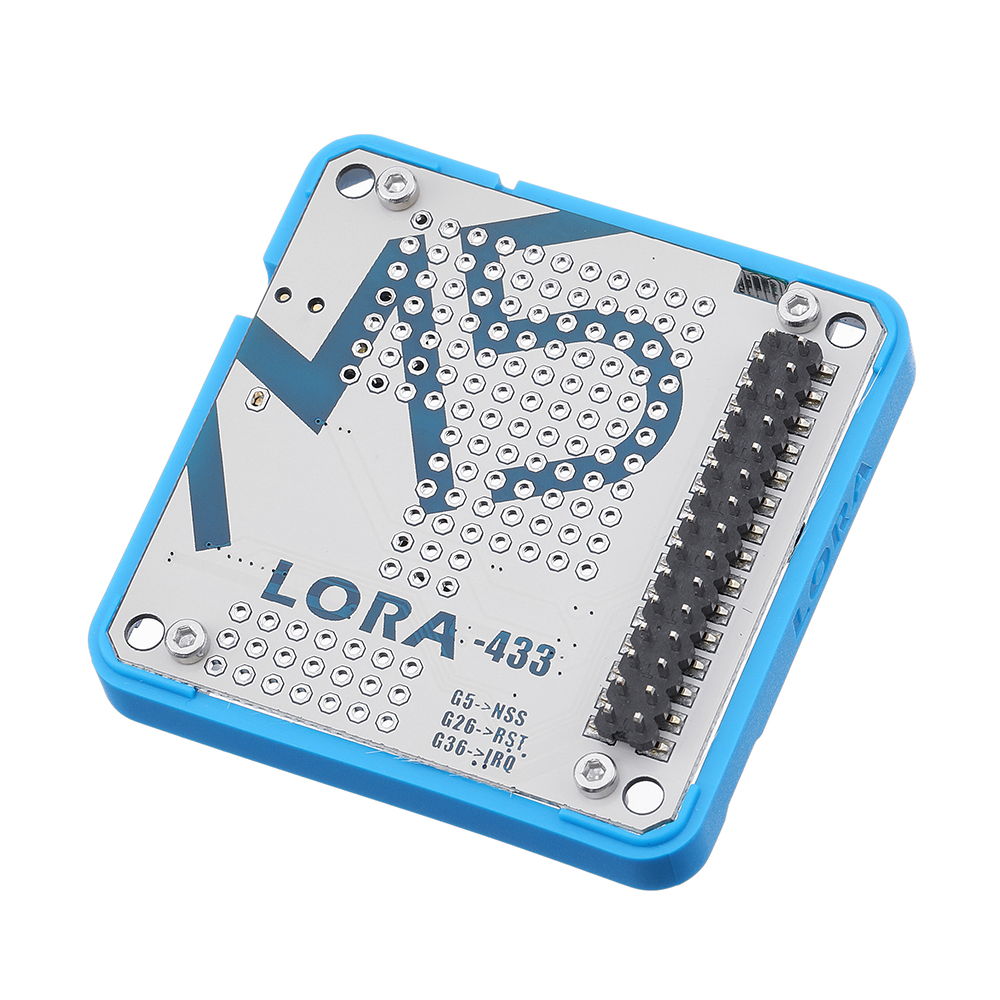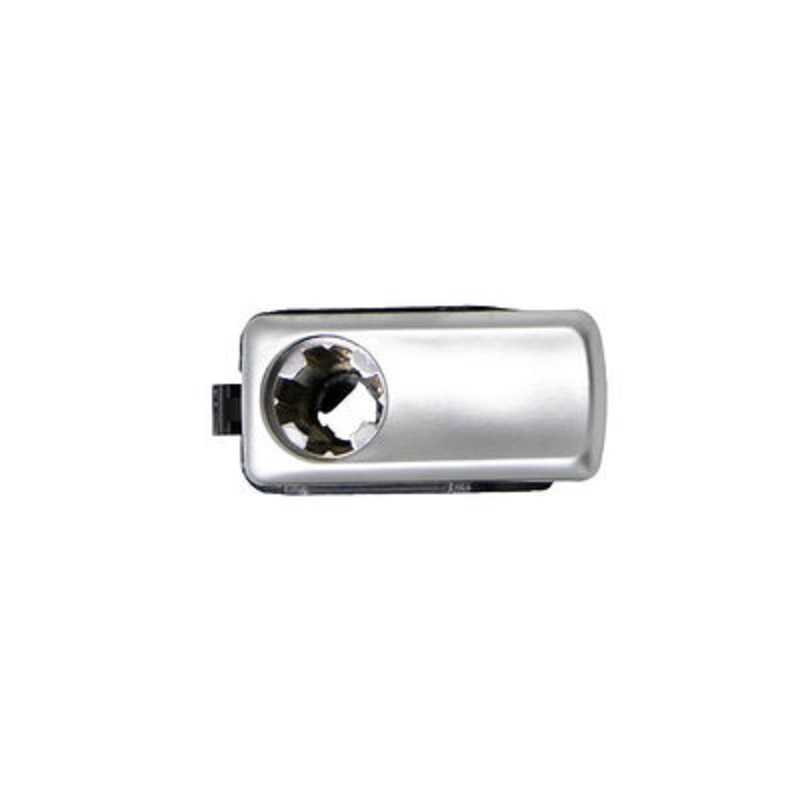M5Stack® 433MHz Wireless LoRa Module for ESP32 DIY Development Kit Built-in Antenna IOT Development Board


Eachine1
sku: 1537061
ACCORDING TO OUR RECORDS THIS PRODUCT IS NOT AVAILABLE NOW
$9.95
Shipping from: China
Description
Description: LoRa integrated LoRa Module Ra-02, designed and produced by Ai-Thinker. On the board has some extra space left over, so we give you a prototyping area, it's great for adding on your customized circuit working with the LoRa Module. LoRa enables long-range transmissions (more than 10 km in rural areas) with low power consumption,The technology is presented in two parts: LoRa, the physical layer and LoRaWAN (Long Range Wide Area Network) the upper layers. LoRa and LoRaWAN permit long-range connectivity for Internet of Things (IoT) devices in different types of industries. Product Features: Lora Module: Ra-02 (by Ai-Thinker) Series Communication Protocol: SPI Universal Perboard Working Frequency: 433 MHz Supports FSK, GFSK, MSK, GMSK, LoRa and OOK modulation modes Receive sensitivity: lowest to -141 dBm Programmable bit rate up to 300Kbps Build-in PCB Antenna External Antenna port Program platform: Arduino, Mrcropython, UIFlow(Blockly) Product Size: 54.2mm x 54.2mm x 12.8mm Product weight: 14.5g Package Include: 1x M5Stack LoRa Module Applications: Automatic meter reading Home building automation Remote irrigation system Related Link: Offical Video Forum LoRa Info (LoRa) LoRaWAN Regional Parameters EasyLoader click to download EasyLoader 1.EasyLoader is a simple and fast program burner, and each product page has a product-related case program for EasyLoader. 2.After downloading the software, double-click to run the application, connect the M5 device to the computer via the data cable, select the port parameters, and click "Burn" to start burning. 3.The CP210X (USB driver) needs to be installed before the EasyLoader is burned. Click here to view the driver installation tutorial Example: for Arduino IDE These are the point-to-point communication examples between two LORA modules. The LoRa nodes send and receive messages. Blue string indicates sending succeed. Yellow string display the received messages. Red string indicates initialization failed. To get complete code, please click here #include #include //declaration String outgoing; // outgoing message byte msgCount = 0; // count of outgoing messages byte localAddress = 0xBB; // address of this device byte destination = 0xFF; // destination to send to //initialization M5.begin(); LoRa.setPins(); // set CS, reset, IRQ pin LoRa.begin(433E6); // initialize ratio at 915 MHz //send message void sendMessage(String outgoing) { LoRa.beginPacket(); // start packet LoRa.write(destination); // add destination address LoRa.write(localAddress); // add sender address LoRa.write(msgCount); // add message ID LoRa.write(outgoing.length()); // add payload length LoRa.print(outgoing); // add payload LoRa.endPacket(); // finish packet and send it msgCount++; // increment message ID } //receive message void onReceive(int packetSize) { if (packetSize == 0) return; // if there's no packet, return int recipient = LoRa.read(); // recipient address byte sender = LoRa.read(); // sender address byte incomingMsgId = LoRa.read(); // incoming msg ID byte incomingLength = LoRa.read(); // incoming msg length String incoming = ""; while (LoRa.available()) { incoming += (char)LoRa.read(); } } onReceive(LoRa.parsePacket());Copy to clipboardErrorCopied Schematic:
Price history chart & currency exchange rate
Customers also viewed

$109.71
LED Nordic Children's Bedroom Simple Aircraft Personality Modern Wood Grain Ceiling Lamp
aliexpress.com
$0.36
1Pcs Halloween Pumpkin Stress Relief Ball Toy Soft Anti-stress Squeeze Toys For Adults Kid Halloween Party Gifts
aliexpress.com
$6.48
4Pcs Replacement Mops Rag Cloths For Roborock S7 Vacuum Cleaner Sweeper Accessories
aliexpress.com
$4.16
Stilt Leg Bands Straps, Adjustable Comfort Drywall Stilts Leg Band Straps Loop Home Improvement Replacement Part
aliexpress.com
$8.66
NEW 14.8V 6800mAh 18650 Replacement Li-ion Battery for Conga Excellence 990 1090 Ecovacs Deebot N79S N79 Eufy Robovac 11S 12 15C
aliexpress.com
$4.11
Filtro de aceite para BMW Countryman X1 X2 F54 F55 F56 F57 I8 para MINI , filtros aceite motor 11428593186
aliexpress.com
$16.94
New Winter Baby Padded Jacket Toddler Check Pattern Lamb Wool Coat Infant Outwear
aliexpress.com
$55.25
Korean Autumn Formal Ladies High Quality Blazer Women Business Suits with Sets Work Wear Office Uniform Pants Jacket Two Piece
aliexpress.com
$21.14
Christmas for kid Jurassic World Dinosaur Chinese Model Building Dino Velociraptor Figure Bricks Toys
aliexpress.com
$38.99
For Toyota FJ Cruiser 2007 2008 2009 2020 2021 ABS Car High Brake Light Decoration Cover Auto Styling Exterior Accessories
aliexpress.com
$98.40
White Woolen Men Suit Blazer Long Overcoat Jacket Formal Business Winter Thick Warm Custom Made Double Breasted Prom Kingcoat
aliexpress.com
$10.92
Fairy Forest Spell Owl Castle Birthday Party Photography Backdrop Kids Weird Towers Clouds Window Lights Photographic Background
aliexpress.com
$70.29
Bubble Kiss Orange Anti-pilling Comforter Blanket Home Decor Cotton Ethnic Style Geometric Pattern Throw Blanket for Bed New
aliexpress.com
$226.78
Printhead wholesale Print Head for Canon iPF6300 6350 6400 6410 6450 6460 8300 8300S 8310 8400 8410 9400 9400S 9410 PF-05 pf 05
aliexpress.com
$3.12
Personality Creative Exquisite Bohemian Artificial Crystal Beaded Pendant Multilayer Glass Elastic Rope Bracelet For Women
temu.com
$8.54
Чехол SignumCase Realme 8i Черный лаковый Герб Армении черный, Realme 8i Черный лаковый Герб Армении
goods.ru
$58.78
Фотошторы для кухни и спальни JoyArty Oxford DeLuxe JoyArty "Орнамент и полосы", Орнамент и полосы
goods.ru
$15.89
Cogfs Water Detector WLAN Overflow Leak Alarm for TUYA WiFi Water Alarm Water Sensor
walmart.com
$46.41
Кроссовки женские Refresh TEXTILE COMBINED LADIES SHOES 79083 белые 36 EU, TEXTILE COMBINED LADIES SHOES 79083
goods.ru
$64.24
woman purse handbag cosmetic bag case clutch original box lady girls whole quality flower checker grid219j
dhgate.com
$49.85
Кольцо женское из красного золота с раухтопазом, фианитом 585Gold 201011512, р. 17, 201011512
goods.ru
$5.30
L5YA Flower Shaped Organizer Rack Epoxy Resin Mold Storage Shelf Casting Silicone Mould DIY Crafts Display Stand Tray Jewelry
aliexpress.com
$90.53
Кенгурятник Opel Zafira 99-05 защита переднего бампера кенгурятники на для Опель Зафира Opel Zafira 99-05 d60х1,6мм
bigl.ua
$32.53
Мужская кожаная курточка, косуха мужская, демисезонная курточка, черная,коричневая весенняя куртка, байкерская
bigl.ua
$41.22
heavy fabric WE11DONE Damage Sweatshirts Men Women 1:1 High Quality streetwear Oversize Hoodie welldone pullover
aliexpress.com
$162.97
men's suits & blazers tian qiong - two piece men's suit, black and navy blue, bridegroom's wedding , korean jacket, pants, 20, White;black
dhgate.com
$47.54
Repair Replacement Grip Glove Box Handle Auto Lid Switch Car Hole Modern Lock Compartment Tool For Mercedes-Benz ML GLE Class W166/W292
dhgate.com
$50.72
Стеклянный чайник, чайник с ситечком, термостойкий стеклянный чайник для цветущего чая и листового чая, цветочный чайник
joom.ru$3.29
Ccf Snack Ribut Jadul Bunga 250 G || 500Gr Cemilan Keripik Camilan Kripik Kerupuk Makanan Jajanan Kering
shopee.co.id











